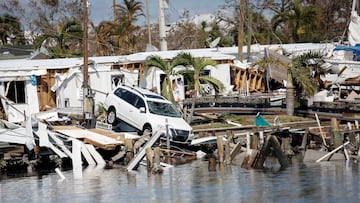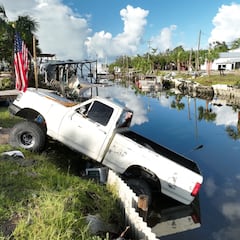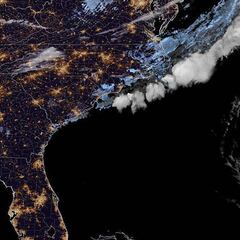When does hurricane season start? These are the predictions for 2024
Experts predict a fairly active hurricane season, which could see more than 30 storms. We explain when it starts and when it ends.

The Atlantic hurricane season is approaching. According to the National Office of Oceanic and Atmospheric Administration (NOAA), it begins on June 1 and runs until November 30.
From 1991 to 2020, an average Atlantic hurricane season has 14 named storms, 7 hurricanes, and 3 major hurricanes (Category 3, 4, or 5 on the Saffir-Simpson Hurricane Wind Scale ).
The first named storm usually forms in mid- to late June, while the first hurricane tends to form in early to mid-August. The first major hurricane typically forms in late August or early September.
For 2024, a fairly active hurricane season is expected, with more than 30 storms, according to a forecast from the University of Pennsylvania.
Experts predict the most active hurricane season on record with 33 storms
For more than a decade, climate scientist Michael Mann of the University of Pennsylvania’s College of Arts and Sciences and his colleagues have annually reviewed historical weather data, or current ocean and atmospheric conditions, applying computer models to forecast upcoming hurricane seasons.
According to the most recent analysis, Mann and his team forecast a record number of 33 named tropical cyclones, potentially ranging between 27 and 39.
“This year’s predictions are influenced by particularly high sea surface temperatures in the North Atlantic Main Development Region (MDR), which, as of this month, are recorded at more than 1.9°C above average according to NOAA’s Coral Reef Watch,” the report notes.
On the other hand, The Weather Company and Atmospheric G2 updated their own prediction for the 2024 hurricane season raising the number of storms expected. Their forecast is for 25 named storms, of which 12 will turn into hurricanes and 6 of them major hurricanes. That is the highest number hurricanes ever anticipated in any outlook issued by The Weather Company.
The National Hurricane Center in Miami begins issuing daily tropical weather outlooks every year on 15 May.
You may be interested in: Tornado Alley: which states make up the ‘tornado alley’ and what it is
How do hurricanes form?
Hurricanes are the most violent storms on Earth, according to the National Aeronautics and Space Administration (NASA). They are also known as typhoons or cyclones, but the scientific term for all these storms is tropical cyclone.
According to NASA, tropical cyclones are like giant engines that use warm, humid air as “fuel,” which is why they only form over oceans of temperate water, near the equator. Warm, moist air over the oceans rises causing an area of lower air pressure near the ocean.
Higher pressure air from surrounding areas fills the low pressure area. Subsequently, this “new” air becomes warm and humid and also rises. As the warm air continues to rise, the surrounding air rotates to take its place. When warm, moist air rises and cools, water in the air forms clouds. The entire system of clouds and air rotates and grows, fueled by the heat of the ocean and water evaporating from the surface.
As the storm system spins faster and faster, an eye forms in the center. The upper high pressure air descends into the eye. When the winds in the rotating storm reach 39 mph, the storm is called a tropical storm and gets named, but when they reach 74 mph, it is officially considered a tropical cyclone or hurricane, beginning to be classified by categories.
Related stories
Tropical cyclones usually weaken when they make landfall, because they are no longer “powered” by the energy of the warm ocean waters. However, they often move inland, causing rain and wind damage.
The categories are classified from 1 to 5, the last being the most catastrophic:
- Category 1: 74-95 mph
- Category 2: 96-110 mph
- Category 3: 111-129 mph
- Category 4: 130-156 mph
- Category 5: 157 or more mph


Complete your personal details to comment